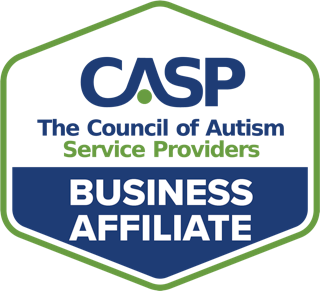Introduction & Our Goal
No one was expecting the COVID-19 to force practitioners to provide from their homes. At Rethink, we have telehealth solutions integrated into our ABA practice management solution. For Rethink users, we have prepared guides and instructions on how to use our telehealth solution to conduct your remote sessions. We understand that not all of you are users of our platform, so we will be releasing content that can help support your operations.
Interested in learning how our solutions can help you? Schedule Your Free Demo
We are working hard to distribute the most up-to-date content that will help you transition your practice from in-person to remote sessions. Our team will keep adding resources and sharing our knowledge as quickly as possible.
Please bookmark this page and check periodically for updates.
How to use the bundle
Download Bundle
What’s included in the bundle
Section 2: Research & Resources
Section 3: General Tips & Resources
Section 4: Videos – COMING SOON
1. Rethink Parent Portal Task Analysis for Clinicians
This document is designed for clinicians to assist parents in the utilization of the Rethink Behavioral Health parent portal.
2. Rethink Behavioral Health Clinical Prep for Telehealth Services
This document provides resources for clinicians for setting up Rethink client profiles to provide telehealth consulting services. Section 2: Research & Resources
Dimensions of Family and Professional Partnerships: Constructive Guidelines for Collaboration
Abstract
The development of collaborative partnerships between parents and professionals is too often unsuccessful. One reason for this failure may be the lack of empirical understanding of the components of interpersonal partnerships. Using qualitative inquiry, 33 focus groups were conducted with adult family members of children with and without disabilities and service providers and administrators. In addition, 32 individual interviews were conducted with non-English-speaking parents and their service providers.
Indicators of professional behavior facilitative of collaborative partnerships were identified. These indicators were organized into six broad themes: (a) Communication, (b) Commitment, (c) Equality, (d) Skills, (e) Trust, and (f) Respect. The specific meaning of each theme is described, including similarities and differences between professionals and family members. Policy, practice, and future research implications are discussed.
Source: Vol. 70, No. 2, pp. 167-184. ©2004 Council for Exceptional Children.
Telehealth and the practice of Applied Behavior Analysis (ABA)
Overview
Telehealth is defined as the “mode of delivering health care services and public health via information and communication technologies to facilitate the diagnosis, consultation, treatment, education, care management, and self-management of a patient’s health care while the patient is at the originating site and the health care provider is at a distant site. Telehealth facilitates patient self-management and caregiver support for patients and includes synchronous interactions and asynchronous store and forward transfers.” 1.2 Further, “Telehealth is not a distinct service, but a way that providers deliver health care to their patients that approximates in-person care. The standard of care is the same whether the patient is seen in-person or through telehealth”
As early as the 1970s telehealth was used by the health care industry to monitor the health of persons not at a clinical site or hospital; starting with the monitoring of astronauts in NASA’s space program. 4 Since then, telehealth has been successfully used in clinical care, research, education, and program management. 5 Applications in ABA include, but are not limited to: assessment, treatment plan development, direct treatment (individual and group), direct and indirect supervision, parent and caregiver training, coordination of care, and discharge planning.
More recently, California enacted the Telehealth Advancement Act of 2011 which allows healthcare practitioners to use telehealth as a tool in providing care to “reduce costs, improve quality, change the conditions of practice, and improve access to health care, particularly in rural and other medically underserved areas.” Further, the intent of the legislation is “that the fundamental health care provider-patient relationship cannot only be preserved, but can also be augmented and enhanced, through the use of telehealth as a tool to be integrated into practices.”
Source: California Association for Behavior Analysis
Compassionate Care in Behavior Analytic Treatment: Can Outcomes be Enhanced by Attending to Relationships with Caregivers?
Abstract
The practice of behavior analysis has become a booming industry with growth to over 30,000 Board Certified Behavior Analysts (BCBAs) who primarily work with children with autism and their families. Most of these BCBAs are relatively novice and have likely been trained in graduate programs that focus primarily on conceptual and technical skills. Successfully working with families of children with autism, however, requires critical interpersonal skills, as well as technical skills.
As practitioners strive to respond efficiently and compassionately to distressed families of children with autism, technical skills must be balanced with fluency in relationship-building skills that strengthen the commitment to treatment. The current article provides an outline of important therapeutic relationship skills that should inform the repertoire of any practicing behavior analyst, strategies to cultivate and enhance those skills, and discussion of the potential effects of relationship variables on treatment outcomes.
Source: Association for Behavior Analysis International 2018
Family-Professional Partnerships
Intro
Parent involvement and parent-professional partnerships will look different for each family. Successful parent-professional partnerships often depend on the professional’s ability to:
- Identify individual family-involvement strategies, building on what is already in place
- Understand social, cultural, and economic issues that affect families and influence how parents become involved
Source: PACER Center, Inc. 2004
The Effects of Behavioral Skills Training on Caregiver Implementation of Guided Compliance
Abstract
The effectiveness of a behavioral skills training package that consisted of modeling, rehearsal, and feedback was evaluated to increase correct implementation of guided compliance by caregivers of 3 children who exhibited noncompliance. Results showed that the training package improved the performance of guided compliance. Generalization probes indicated that the skills learned were exhibited in different settings 3 to 6 weeks after training ended.
Source: J Appl Behav Anal. 2009 Summer; 42(2): 405–410.
The Effect of Behavioral Skills Training on Implementation of the Picture Exchange Communication System
Abstract
The effectiveness of a behavioral skills training (BST) package to teach the implementation of the first three phases of the picture exchange communication system (PECS) was evaluated with 3 adults who had no history teaching any functional communication system. A multiple baseline design across participants was used to evaluate the effectiveness of the training package, which consisted of a video, written and verbal instructions, modeling, rehearsal, and feedback.
Results showed significant improvements relative to baseline in a short amount of training time and that skills generalized to a learner with a severe developmental disability. Skills were maintained at a 1-month follow-up for 1 participant.
Source: J Appl Behav Anal. 2009 Fall; 42(3): 541–549.
Effects of Behavioral Skills Training on Parental Treatment of Children’s Food Selectivity
Abstract
We used behavioral skills training to teach parents of 3 children with autism spectrum disorder and food selectivity to conduct a home-based treatment package that consisted of taste exposure, escape extinction, and fading. Parent performance following training improved during both taste sessions and probe meals and was reflected in increases in children’s acceptance of bites and decreases in their disruptive behavior. Parents also reported that increases in diet variety were maintained at follow-up.
Source: J Appl Behav Anal. 2012 Spring; 45(1): 197–203.
Cultural Humility Versus Cultural Competence: A Critical Distinction in Defining Physician Training Outcomes in Multicultural Education
Abstract
Researchers and program developers in medical education presently face the challenge of implementing and evaluating curricula that teach medical students and house staff how to effectively and respectfully deliver health care to the increasingly diverse populations of the United States. Inherent in this challenge is clearly defining educational and training outcomes consistent with this imperative.
The traditional notion of competence in clinical training as a detached mastery of a theoretically finite body of knowledge may not be appropriate for this area of physician education. Cultural humility is proposed as a more suitable goal in multicultural medical education. Cultural humility incorporates a lifelong commitment to self-evaluation and self-critique, to redressing the power imbalances in the patient-physician dynamic, and to developing mutually beneficial and nonpaternalistic clinical and advocacy partnerships with communities on behalf of individuals and defined populations.
Behavioral Telehealth Consultation with Families of Children with Autism Spectrum Disorder
Abstract
In this study, desktop video teleconferencing was used to facilitate behavioral consultation at a distance with three parents of school‐age children with autism spectrum disorders. Parents were supported via desktop video teleconferencing as they conducted functional analyses and learned to implement an antecedent manipulation strategy, functional communication training, and a consequence‐based strategy. Parents then conducted a brief multi‐element treatment comparison to evaluate the preliminary effectiveness of each intervention strategy on their child’s challenging behavior.
The results of this study provide additional support to previous research suggesting that a telehealth model of behavioral consultation may be an effective way to assist parents of children with autism spectrum disorders address challenging behavior that disrupts family routines. Suggestions for future research are discussed. Copyright © 2016 John Wiley & Sons, Ltd.
3. General Tips & Resources
Tips for Conducting Telehealth Consultation
This document provides general tips and suggestions in conducting telehealth consultations such as pre-service considerations, session format considerations, initial sessions, subsequent sessions, additional tips.
Parent Resources
This pack includes a Parent ABC Data Log and a Guidelines to Developing Behavior Management Strategies document.
Supervision Sample Templates
This pack includes an RBT Supervision Checklist (both PDF and an editable Word document), Performance Feedback – Supervision Consultation Form for telehealth (editable Word document) and BCBA RBT Supervision Session Note document.
Within Session Templates
This pack includes a Session Notes Template for Telehealth Consultation (both PDF and an editable Word document), Preference Assessment Checklist, Parent Strategies for Managing Challenging Behaviors, Initial Intake Notes Template for Telehealth (both PDF and an editable Word document), and various PDF and editable data sheets.
Guidelines for Practicing Applied Behavior Analysis During the COVID-19 Pandemic
These guidelines represent an expansion of some information that was first presented on March 25, 2020 in a live webinar hosted by the Association of Professional Behavior Analysts (APBA), titled “Telepractice of ABA During the Pandemic: Working with Health Plans.” They are meant to provide general answers to some of the most common questions that have been posed to APBA since the outset of the COVID-19 outbreak in North America, and a framework to assist ABA practitioners in making certain decisions about whether and how to provide services to clients in the context of the pandemic.
Information and recommendations are offered in these areas:
- Determining if ABA services are deemed “essential” under emergency governmental orders or regulations
- Identifying and complying with applicable behavior analyst licensure laws and rules, in particular those pertaining to telepractice (i.e., remote delivery of ABA services via telephonic, audio, and/or video technologies)
- Using professional standards to guide decision-making about delivering services to clients
- Working with health plans and other third-party payers on the delivery of ABA services via telepractice
Source: https://www.apbahome.net/
Section 4: Videos
Coming Soon!










